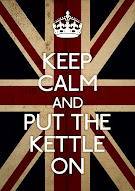
WHERE WAS THE PAUL MORPHY CHESS CLUB?
Blake Pontchartrain
Hey Blake,
Ronnie Virgets wrote a wonderful column on the history of Paul Morphy. My question is: where was the Paul Morphy Chess Club? I can remember an uncle of mine speaking of it often as a place where men met for lunch, cards and cigars.
Kenny Mayer
Dear Kenny,
Virgets' story ("Chairman of the Board," News Views, May 6, 2008) about our local chess genius who died in 1884 at age 47 was excellent.
Morphy was the first great American-born chess player. He traveled to Europe in the 1850s, defeating all challengers except the English champion of the time, Howard Staunton, who refused to play him. Morphy, however, still was hailed as the chess champion of the world.
Paul Morphy Chess Club in New Orleans had several locations, the first in the Balter Building, in the block surrounded by Commercial Place, Camp Street, and St. Charles and Poydras avenues. The last was at 316 St. Charles Ave.
The club was organized in May 1928, when several chess-playing gentlemen agreed to form a new club devoted exclusively to the game. Members were solicited, and the club soon had officers and a charter. New members decided to name the club after the local chess master they so revered. The club opened its doors to members for play on June 22, 1928, Paul Morphy's birthday. There is no longer a chess club by this name in New Orleans, but there are several in America, and there's even a Paul Morphy Chess Club in Sri Lanka.
An earlier group called New Orleans Chess Club was founded in 1841, but it languished due to lack of interest. Later, many New Orleanians became interested in the game when young Paul Morphy burst on the scene. By the mid-1850s, the club sponsored weekly tournaments and membership increased rapidly. Morphy himself was elected president of the club in 1865. Earlier, when Morphy went to Europe in June 1858, the New Orleans Chess Club offered to pay his way. Morphy declined because he did not want to be considered a professional chess player.
Another famous club in the Crescent City was the New Orleans Chess, Checkers and Whist Club. This organization was founded in 1880, shortly before Morphy's death. The club first met in July in a room at 128 Gravier St. There were 27 members. It was an immediate success and membership grew rapidly. New quarters had to be found, so the group relocated to Common Street and then to a three-story building at the corner of Canal and Baronne streets.
Then disaster struck: A fire in 1890 burned the building to the ground. Lost in the fire was invaluable Morphy memorabilia. The owner of the structure agreed to rebuild, and soon the club was re-established in comfortable surroundings on the third floor. At this point, there were more than 1,100 members.
In 1920, another move brought the club to 120 Baronne St., where the men played various games in splendor. It occupied four floors in a large building, which had many rooms for games, as well as dining rooms, a billiard hall, a library and bedrooms for men who lived at the club.
It was after the death of Judge Leon Labatt - a strong supporter and member of the New Orleans Chess, Checkers and Whist Club - and a number of resignations that the members decided to form a new group: the Paul Morphy Chess Club.
Morphy retired from chess long before his death. He played absolutely no games of chess with anyone after 1869.
--
To read my chess novel about Paul Morphy's life, please see this link.


.jpg)












 Dear England
Dear England.jpg) Bookhabit.com
Bookhabit.com



 Check out my novel
Check out my novel 

croppedsidebar.jpg)

.png)
















